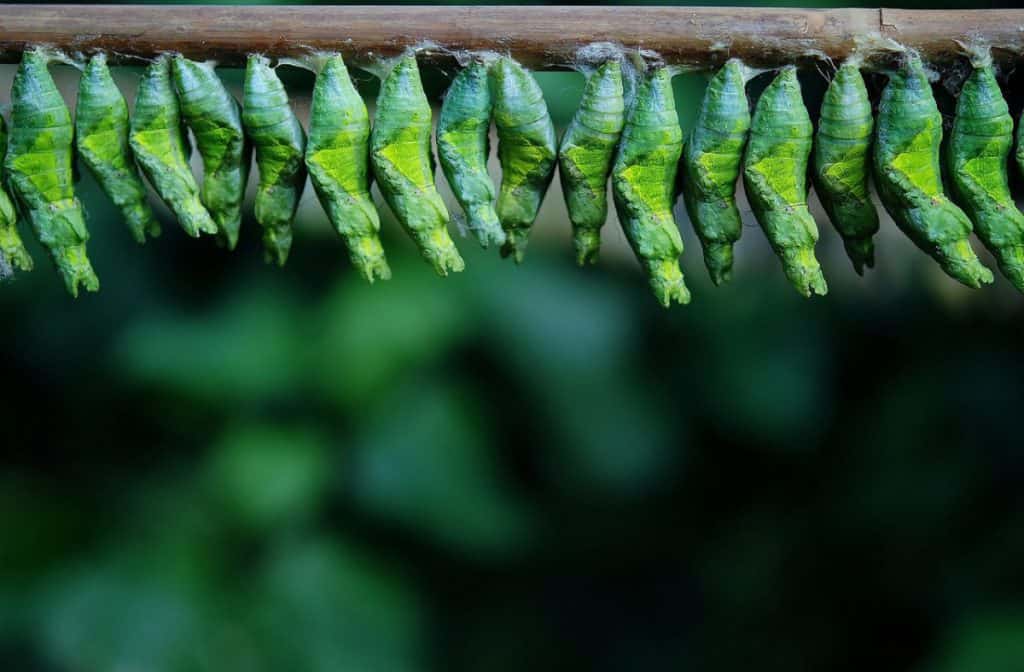
The 5 Creepiest Bugs in the World
Putting the, “Creepy,” in, “Creepy-Crawlies
All kinds of bugs exist in the world, and there are some that people find pretty cute as well as others which are just plain creepy. Most people love ladybugs and butterflies are a fan-favorite, but then there are millipedes, titan beetles, bullet ants, wasps (of all kinds), and–once you learn how dangerous they truly are–mosquitoes. These five bugs are by far the scariest, creepiest, and otherwise will frighten you! Let’s explore some more details about them now.
If you enjoy reading this article, why not check out our articles on What is the Rarest Bug in the World? and Which Bugs Live the Longest?
Millipedes
Why are millipedes called millipedes?
Millipedes have so many legs, and something about all of them crawling along just gives people a shiver. The name comes from Latin and translates to, “Thousand feet.” Millipedes do not have that many feet (or legs) however! Generally, they have 100 pairs (200 total) and the most ever recorded on a millipede is 750. As for what makes them different from centipedes, it is the fact a millipede has two pairs of legs per body segment. Also, centipedes are carnivores and can bite, but millipedes do not. They don’t always have all those legs at birth, though! A newborn millipede only has 3 pairs of legs (six total) upon birth, and over time grows more, and more, and more, every time they molt, taking on their disturbing multi-legged appearance over a period of time.
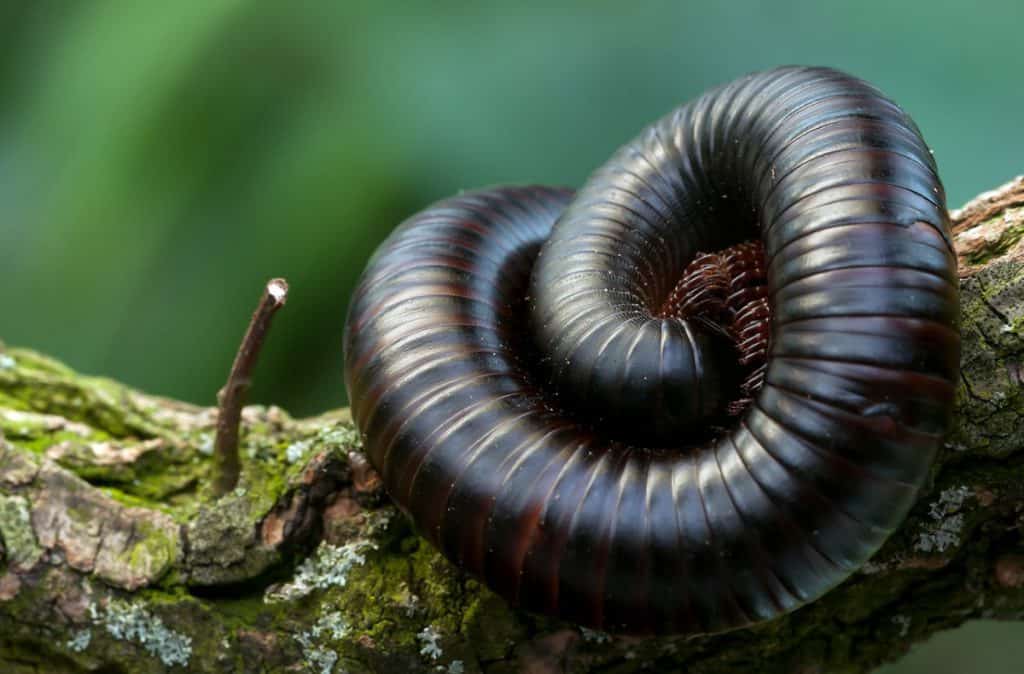
Life of Millipedes:
Millipedes are so leg-centric male ones have special legs just for sex! Called, “Gonopods,” they look a bit like short stumps and are used to impregnate female Millipedes who find themselves open to the advances of a male (men attract females with backrubs given by legs and singing). Despite all these legs, Millipedes are not particularly fast against predators so they are capable of rolling-up into a tightly coiled spiral with their back-plates (called tergites) protecting a soft underbelly.
Fun Facts:
One fascinating aspect of millipedes is how they existed on land in some form for over 400 million years. This means they quite possibly have been living on land, creeping everything else out for millions of years!
Did you know that millipedes make great pets?? If you don’t believe us, read our article about it: Which Bugs Make the Best Pets?
Titan Beetles
How big is a titan beetle?
Titan beetles are terrifying for one big reason. They are massive! The biggest beetle found in the World, a titan beetle can grow up to about 6.5 inches long–and they are very wide as well. With a notable hiss, if you somehow don’t see one you will surely hear a titan beetle if it feels threatened.
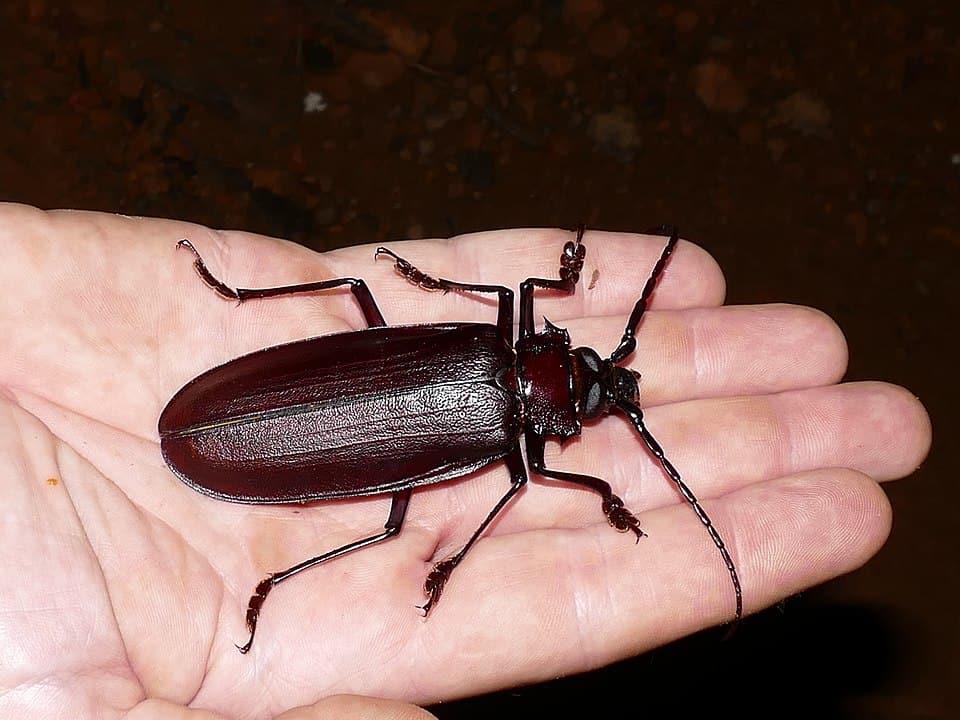
Are they dangerous?
Titan beetles have incredibly strong jaws. Their mandibles have been seen to snap a pencil in half, and they can easily tear into human skin. That said, titan beetles are not especially aggressive towards humans–they are only likely to bite if they truly feel they are in danger.
How do they eat?
As larvae, titan beetles eat decaying wood in the rainforest and are thought to be extremely helpful at reducing the risk of fire from this old, deadwood. One strange fact is that despite being so big, the titan beetle may very well never eat once it has filled-up on wood during its larvae stage and become a massive adult.
How do they mate?
Instead, its main focus is to mate, lay eggs (if female) and hiss at anything that tries to make a meal out of it! Sometimes the titan beetle is mistaken for a giant cockroach due to its tendency to hiss, but unlike how giant cockroaches are harmless to humans, it has been established the titan beetle can carry quite a painful bite, so always be aware of what you’re dealing with should you encounter one or the other in the tropics.
Titan Beetles can be scary, but there are also lots of other cute beetles out there! Like Ladybugs: Do Ladybug Spots Tell Their Age?
Bullet Ants
Ants are no immediately that scary, but the bullet ant is! Its name comes from the fact its sting is thought to be the most painful of any insect–it feels like getting shot with a bullet and keeps hurting for around 24 hours.
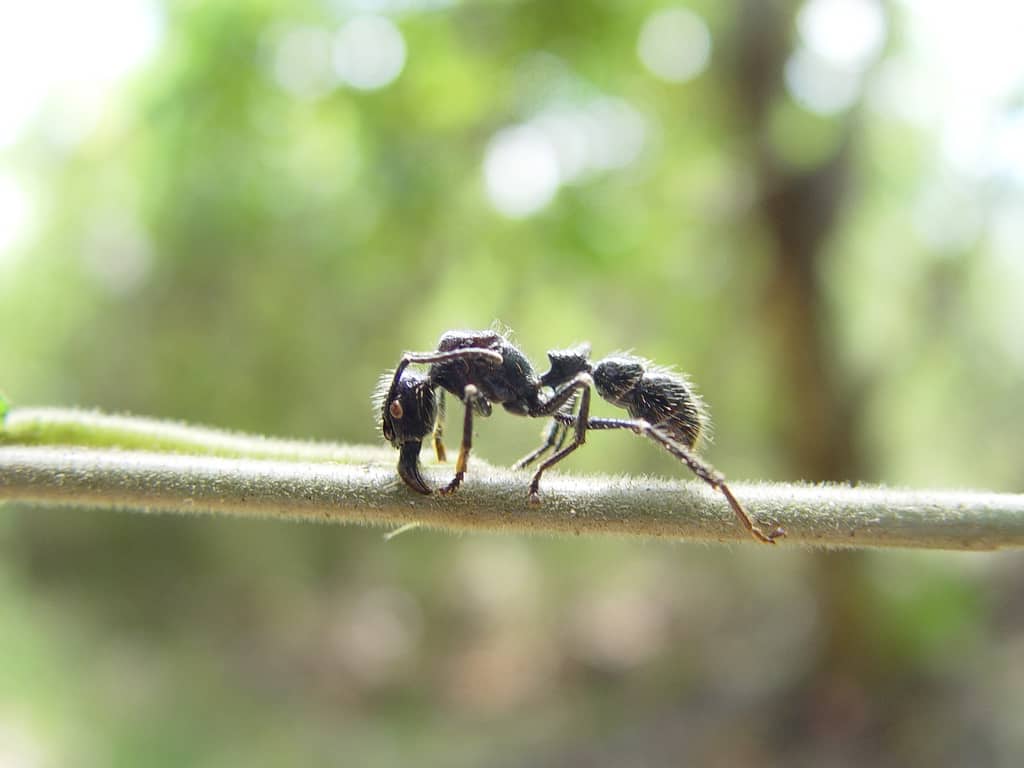
Appearance
That’s right, a single sting, constantly giving-off the sensation of a bullet piercing your skin, for a whole day. That’s pretty darn terrifying! Plus, it is not necessarily just one bullet ant that would sting you. Workers are often together hunting for food with which to feed their colony, and as soon as a single bullet ant stings something (or someone), a pheromone is released into the air that encourages any other bullet ants around to start stinging anything they can.
How painful is a bullet ant?
The ant is generally not that aggressive, but that chemical is a defense mechanism of the sort where if one ant thinks there is enough danger to sting, all the others maybe should too. That is good for bullet ants to ward-off danger, but bad for any human who might anger a single ant and then find themselves getting stung multiple times with–as has been established–the most painful sting in the World!
Bullet ant colonies will fight one another in the tropical regions they are found, and certain other insects survive off of wounded bullet ants (the phorid fly lays its eggs in hurt ants that cannot easily fight-back). Also, as bullet ant colonies fight each other often, sometimes the most dangerous predator of the bullet ant is simply a bullet ant from another colony! Basically, just stay-clear of bullet ants, letting them prey on each other instead, and you won’t have to worry about spending a day handling horrific pain from any stings!
Wasps
There are many species of wasps from big to small, relatively useful (that eat bugs which would otherwise damage crops) to those that are quite invasive and less-helpful (the Japanese giant hornet preys upon bees and has decimated countless colonies).
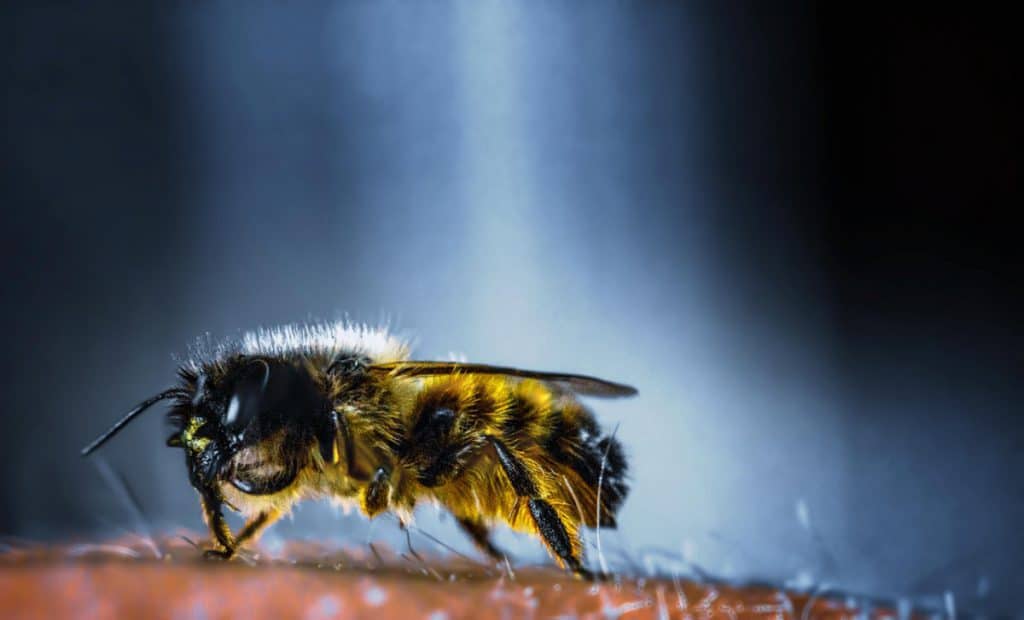
Do wasps do anything good?
The one thing that stays the same across all kinds of wasps, however, is how fear-inducing they can be. Even though wasps do not swarm, much like the bullet ant, when one stings it releases a pheromone that encourages others to follow suit. Plus, just as for some people a bee sting is no big deal unless they have a fatal allergy, wasp stings are potentially not too bad unless a person has an allergy, at which point medical care is needed to stop the risk of anaphylactic shock.
Are Wasps aggressive?
Wasps generally will feed their young the larvae of other insects and when fully-grown like to eat sweet nectars and such. This may be one reason if you’ve ever had a hummingbird feeder you’ve seen wasps crowding around it as well. It can be a scary sight, but it is perfectly normal as wasps love the sweet stuff. As imposing as they may look, many wasp species help control the population of other insects (although sometimes they prey upon ones that would better be left alone). They are scary in appearance, but wasps are (usually) useful.
Mosquitoes
When people think about bugs that scare them, mosquitoes admittedly do not generally top the list. We generally think of them as an annoyance, with the couple hundred species that feed on humans (out of 7,500 species) causing all kinds of itching.

Are mosquitoes dangerous?
However, mosquitoes are possibly the scariest insect of all due to being the #1 most deadly. Around one million humans die every year from malaria, an illness transmitted by the insect. In 2015 around 212 million people were infected with malaria due to mosquitoes and children under the age of 5 are most at risk of dying from malaria caused by a mosquitoes bite. Not to mention, mosquitoes carry a wide range of other illnesses such as West Nile, Zika, and nastier and potentially lethal sicknesses–all from a single unpleasant and itchy bite.
Do male mosquitoes bite?
It is worth noting that male mosquitoes do not actually drink blood. Males eat plants, but females have to feast upon blood to lay their eggs.
How do you get rid of mosquitoes?
Using nets or other methods to keep them away from our skin is smart, and it has been found only about four chemicals are good at repelling them off of us–Picaridin, DEET, Oil of Lemon Eucalyptus AKA the synthetic PMD, and IR3535 works as well. Be aware some of these chemicals that can kill mosquitoes are banned, however, as DEET especially wreaked havoc on the ecosystem and people’s health when it was widely-used.
Are mosquitoes good for plants?

Mosquitoes themselves do not seem to contribute anything positive to our planet, but they are a great food source for animals that do positively impact the planet, such as frogs, fish, spiders, and a variety of other insects and critters.
Yes, while mosquitoes may strike us more like something annoying to deal with, they are quite terrifying once the facts are considered about just how dangerous their bite can be. Wearing repellant and being careful when out-and-about during the hours they are active is a good way to stay safe.
Important to the Ecosystem Regardless of How Scary They Are
Even though these five bugs may be freaky, they are all important in some way to the ecosystem. From how titan beetles eat decaying wood to the fact that wasps are useful for killing other crop-destroying bugs, these insects might be disturbing, but even the nastiest creepy crawlies serve our ecosystem in some way. It is perfectly okay to consider these insects gross or unpleasant, but by knowing they are important to our planet we can also respect them…just maybe from really, really far away.
If you enjoyed reading this article, why not check out our articles on Small, Tiny, Brown Bugs in My Life – What Are They? and How Do You Get Rid of Dust Mites Naturally?
Recent Posts
Tiny Black Bugs in Bathroom NO WINGS: What They Are and What to Do!
Finding tiny black bugs in your bathroom can be uncomfortable, to say the least. Especially if they are persistent, or they appear in very large numbers, which they often like to do. When it...
Tiny Black Bugs in Plant Soil - What Are They & What To Do About It
A short horror story: You get a new houseplant. You do your best to take care of it. You’ve ensured that it has the right soil, the right amount of sun, it gets enough water. And then one day, you...

